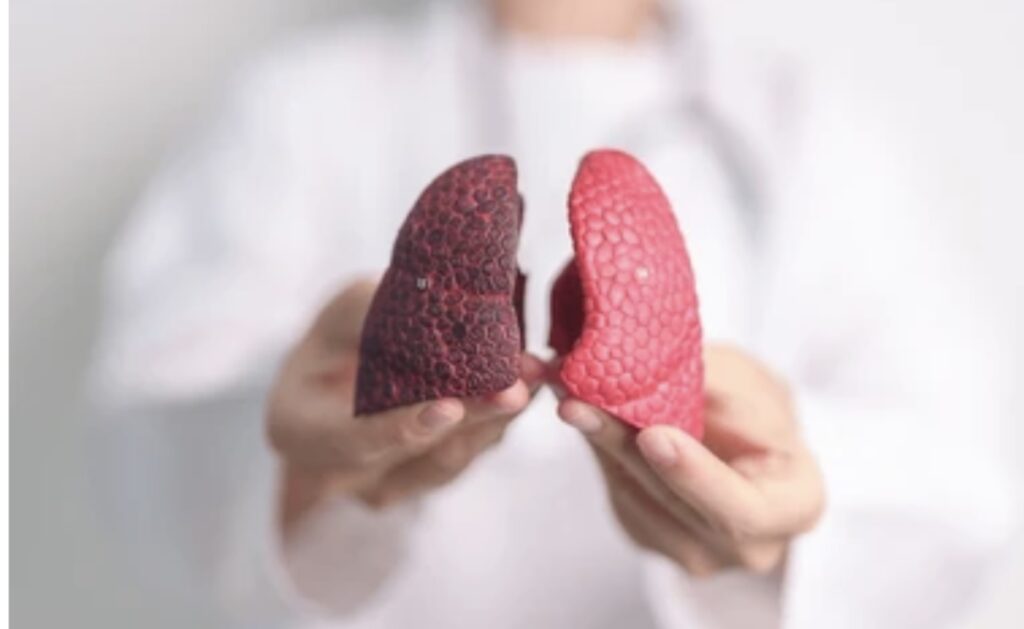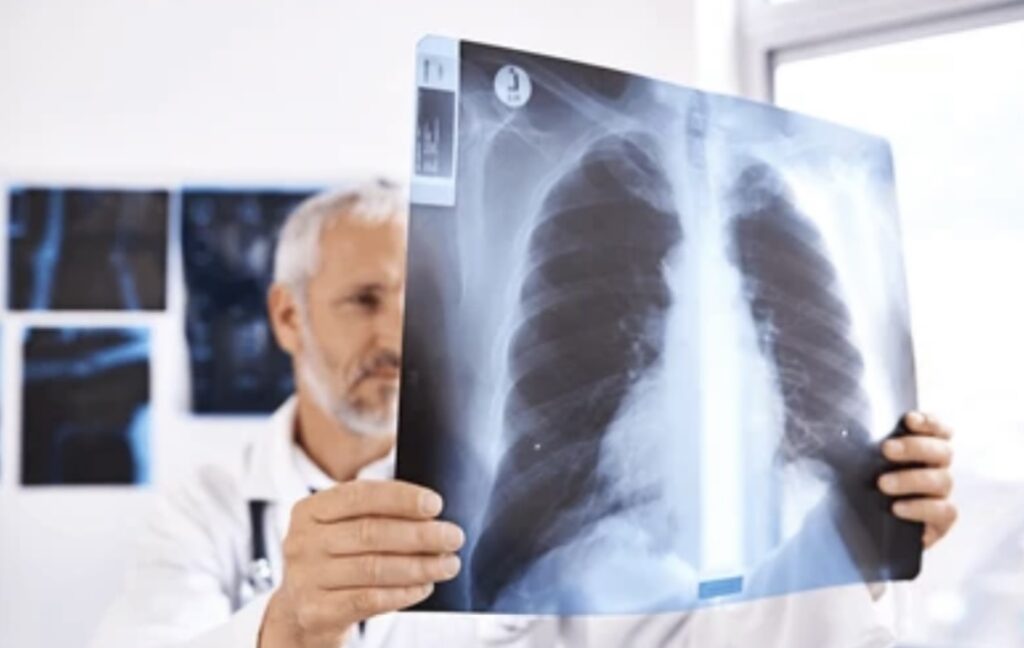Introduction

The lungs are vital organs responsible for breathing and gas exchange in the human body. They provide oxygen to the bloodstream and remove carbon dioxide, a waste product of metabolism. The health of our lungs is paramount to our overall well-being, yet many people overlook the importance of lung health until they experience respiratory issues. In this extensive guide, we’ll explore the lungs’ structure, function, diseases, preventive care, and lifestyle choices that can improve lung health.
What Are Lungs?

Lungs are paired organs in the chest responsible for facilitating breathing. They are located within the thoracic cavity, protected by the rib cage. As a part of the respiratory system, the primary function of the lungs is to bring oxygen into the body and expel carbon dioxide, which is a byproduct of metabolism. Without the proper functioning of the lungs, the body would be deprived of oxygen, leading to severe health consequences.
Each lung is roughly cone-shaped and can be divided into sections called lobes—the right lung has three lobes, while the left lung has two, making space for the heart. The size and shape of the lungs vary from person to person, and they expand and contract as we breathe.
The Structure of the Lungs
The lungs are highly specialized organs made up of various components that work together to facilitate gas exchange. Let’s break down the key structures of the lungs:
1. Trachea (Windpipe)
The trachea is the primary airway that connects the mouth and nose to the lungs. It splits into the left and right bronchi, which direct air into each lung.
2. Bronchi and Bronchioles
The bronchi are large tubes that branch off the trachea and enter the lungs. The bronchi further divide into smaller branches called bronchioles. These bronchioles end in clusters of tiny air sacs called alveoli.
3. Alveoli
Alveoli are the most important part of the lungs for gas exchange. They are tiny air sacs where oxygen from the air enters the blood, and carbon dioxide is expelled from the blood into the air to be exhaled.
4. Diaphragm
The diaphragm is a large muscle located below the lungs that helps in the process of inhalation and exhalation. It contracts and flattens during inhalation to create space for the lungs to expand.
5. Pleura
The lungs are covered by a thin layer of tissue called the pleura, which consists of two membranes. These membranes secrete a small amount of fluid that reduces friction between the lungs and chest wall during breathing.
How Do the Lungs Work?
The lungs’ primary function is to exchange gases—oxygen and carbon dioxide—between the blood and the air. This process is known as respiration and occurs through the following steps:
1. Inhalation
When you breathe in, air enters the body through the nose or mouth and travels down the trachea. The air then passes through the bronchi, bronchioles, and finally reaches the alveoli. As air enters the lungs, oxygen is absorbed into the bloodstream via diffusion.
2. Oxygen Transport
Once in the blood, oxygen binds to hemoglobin, a protein found in red blood cells, and is transported to tissues and organs throughout the body.
3. Exhalation
During exhalation, the diaphragm relaxes, causing the lungs to contract and push out the carbon dioxide-rich air. Carbon dioxide is a waste product produced by cells during metabolism, and it is expelled from the body through the alveoli.
The entire process of inhalation and exhalation, collectively known as the breathing cycle, is essential for life. Each breath provides the body with fresh oxygen while removing the byproducts of cellular respiration.
Common Lung Diseases

While the lungs are resilient, they are susceptible to a wide range of diseases and disorders. Some of the most common lung diseases include:
1. Chronic Obstructive Pulmonary Disease (COPD)
COPD is a group of diseases that obstruct airflow and make breathing difficult. It includes chronic bronchitis and emphysema. Smoking is the leading cause of COPD, and it is characterized by symptoms like chronic cough, shortness of breath, and mucus production.
2. Asthma
Asthma is a chronic condition in which the airways become inflamed and narrowed, making breathing difficult. Common asthma triggers include allergens, smoke, air pollution, and respiratory infections. Symptoms include wheezing, coughing, and chest tightness.
3. Pneumonia
Pneumonia is an infection that causes inflammation in the air sacs of the lungs. It can be caused by bacteria, viruses, or fungi. Symptoms include fever, cough, chest pain, and difficulty breathing.
4. Lung Cancer
Lung cancer is one of the most common and deadly cancers worldwide. Smoking is the leading cause, though non-smokers can also develop lung cancer. Early detection through screening is critical for improving survival rates.
5. Pulmonary Fibrosis
Pulmonary fibrosis refers to a group of lung diseases that cause scarring of lung tissue. The scarring makes it harder for the lungs to work properly, leading to symptoms like shortness of breath, fatigue, and a dry cough.
6. Tuberculosis (TB)
TB is a bacterial infection that primarily affects the lungs but can spread to other parts of the body. It can be dormant or active, and symptoms include chronic cough, night sweats, and unexplained weight loss.
7. Cystic Fibrosis
Cystic fibrosis is a genetic disorder that causes thick, sticky mucus to build up in the lungs, leading to breathing difficulties and frequent lung infections. It is typically diagnosed in childhood.
Risk Factors for Lung Diseases
There are several factors that can increase the risk of developing lung diseases:
- Smoking: The leading cause of lung disease, particularly COPD and lung cancer.
- Air Pollution: Exposure to outdoor and indoor pollutants, including particulate matter, smoke, and chemicals.
- Genetics: Family history plays a role in diseases like asthma and cystic fibrosis.
- Age: The risk of lung diseases increases with age.
- Infections: Previous respiratory infections, like pneumonia or TB, can cause long-term lung damage.
- Occupation: Exposure to harmful substances in the workplace, such as asbestos, coal dust, and chemicals, can lead to lung diseases.
Signs of Lung Problems
Some of the common signs that may indicate lung problems include:
- Chronic cough
- Shortness of breath or wheezing
- Chest pain or tightness
- Fatigue
- Coughing up blood (hemoptysis)
- Frequent respiratory infections
- Swelling in the legs or ankles
If any of these symptoms persist, it’s important to consult a healthcare professional.
How to Keep Your Lungs Healthy
Maintaining lung health requires a combination of lifestyle choices and preventive measures. Here are some tips to keep your lungs functioning at their best:
1. Avoid Smoking
Quitting smoking is the most important step in preventing lung diseases. Even if you’ve smoked for years, quitting now can reduce your risk of developing conditions like COPD and lung cancer.
2. Regular Exercise
Physical activity helps improve lung function by increasing lung capacity and strengthening respiratory muscles. Aerobic exercises like walking, swimming, or cycling can improve both lung health and overall fitness.
3. Protect Yourself from Air Pollution
Minimize exposure to outdoor air pollutants by avoiding outdoor activities during high pollution periods. Use air purifiers indoors and avoid exposure to second-hand smoke.
4. Get Vaccinated
Vaccines like the flu shot and pneumonia vaccine can help protect against respiratory infections that can damage the lungs.
5. Maintain a Healthy Diet
A well-balanced diet rich in fruits, vegetables, and antioxidants can help protect lung tissue and reduce inflammation.
6. Regular Health Checkups
Routine checkups and screenings can help detect lung problems early, particularly for individuals with risk factors such as smoking history.
When to See a Doctor
It’s crucial to consult a doctor if you experience any of the following:
- Persistent cough lasting more than three weeks
- Difficulty breathing or shortness of breath
- Unexplained weight loss or fatigue
Lung Health Tips and Lifestyle Changes
- Stop Smoking: Seek support from smoking cessation programs or medications to help you quit.
- Avoid Pollutants: Limit exposure to fumes, chemicals, and dust in the environment.
- Practice Deep Breathing: Techniques like diaphragmatic breathing can improve lung capacity and reduce stress.
- Stay Hydrated: Drink plenty of water to keep the airways moist and help prevent infections.
- Exercise Regularly: Regular physical activity supports healthy lung function and improves overall cardiovascular health.
Frequently Asked Questions (FAQs)
1. Can lung diseases be cured?
Some lung diseases like asthma and COPD can be managed effectively with medication and lifestyle changes, but others like pulmonary fibrosis and lung cancer may not be curable. Early detection is crucial for improving outcomes.
2. How can I strengthen my lungs?
To strengthen your lungs, engage in regular aerobic exercise, avoid smoking, and practice breathing exercises. These habits improve lung function and capacity over time.
3. What foods are good for lung health?
Foods rich in antioxidants, such as leafy greens, berries, and citrus fruits, help protect the lungs from oxidative stress and inflammation. Omega-3 fatty acids from fish, nuts, and seeds also support lung health.
Conclusion
Your lungs are among the most critical organs in your body, responsible for providing oxygen to every cell and removing carbon dioxide. Taking care of your lungs through preventive measures, healthy lifestyle choices, and regular checkups is key to ensuring long-term respiratory health. By understanding the structure, function, and potential diseases associated with the lungs, you can make informed decisions about your health and well-being.
References:
- Mayo Clinic – Lung Diseases
- American Lung Association
- National Heart, Lung, and Blood Institute (NHLBI)
Discover more from ZOOLOGYTALKS
Subscribe to get the latest posts sent to your email.


Pingback: LUNG CANCER SYMPTOMS | ZOOLOGYTALKS | 2024
Pingback: BREATHING AND RESPIRATION | ZOOLOGYTALKS | 2025